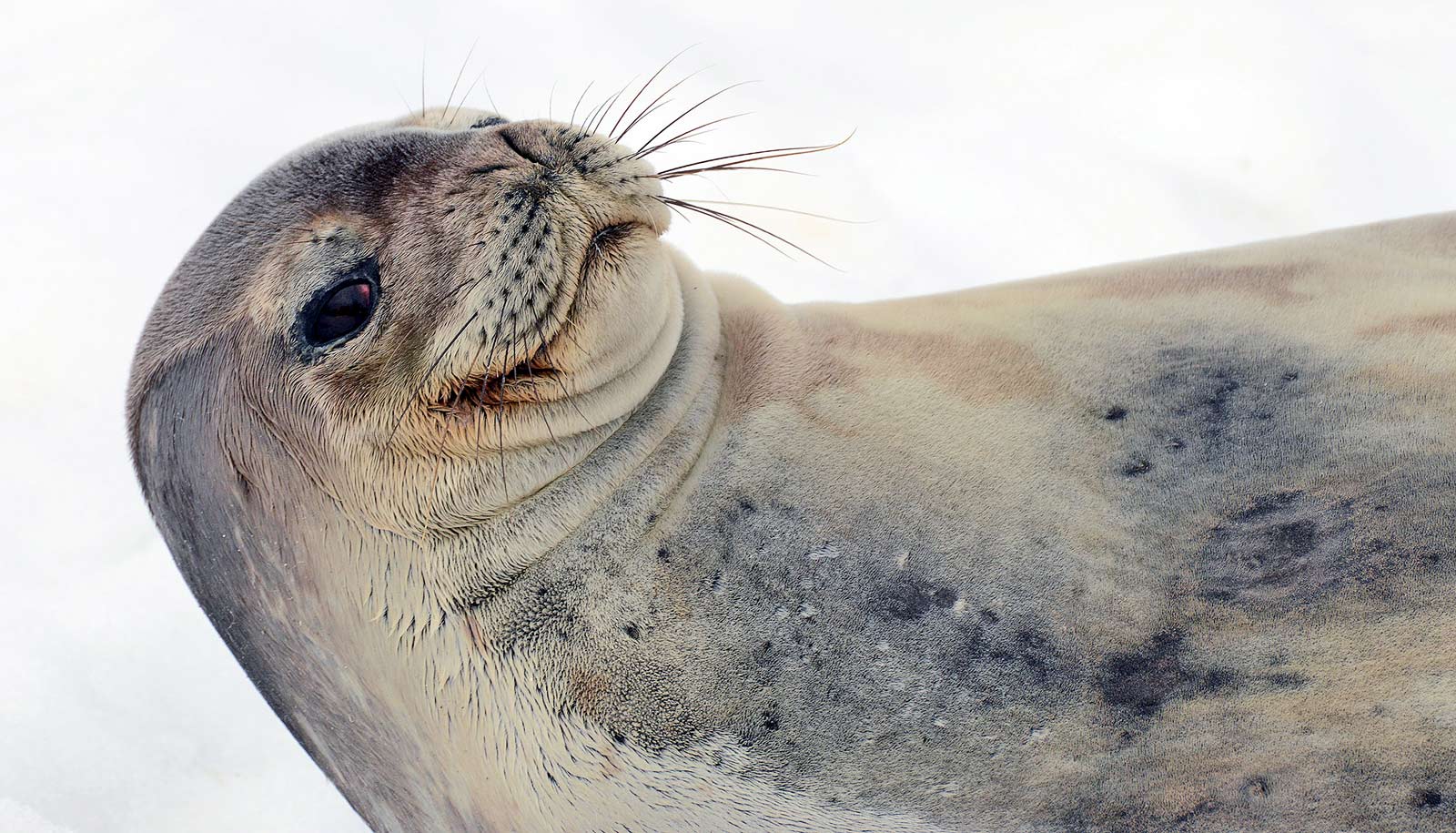
Weddell seals are chirping, whistling, and trilling under Antarctica’s ice at sound frequencies that humans can’t hear, report researchers.
Two years of recordings at a live-streaming underwater observatory in McMurdo Sound have captured nine types of tonal ultrasonic seal vocalizations that reach to 50 kilohertz. Humans hear in the sonic range of 20 to 20,000 hertz, or 20 kilohertz.
“It really sounds like you’re in the middle of a space battle in Star Wars, laser beams and all.”
Weddell seals (Leptonychotes weddelii), the world’s southernmost-ranging mammal, thrive under the continent’s sea ice, using their large teeth to create air holes. They can dive to 600 meters (1,969 feet) in search of prey and remain submerged for 80 minutes. Researchers had first identified 34 seal call types at sonic frequencies in 1982, tying the sounds to social interactions.
The study’s lead author Paul Cziko, a visiting research professor in the University of Oregon’s Institute of Ecology and Evolution, began recording the seals’ sonic-ranged vocalizations in 2017 after completing the installation of the McMurdo Oceanographic Observatory. Workers at McMurdo Station, he says, often fell asleep listening to broadcasts of the seals’ sonic sounds coming from below.
“The Weddell seals’ calls create an almost unbelievable, otherworldly soundscape under the ice,” Cziko says. “It really sounds like you’re in the middle of a space battle in Star Wars, laser beams and all.”
Over the next two years, the observatory’s broadband digital hydrophone—more sensitive than equipment used in earlier recordings—picked up the higher-frequency vocalizations during passive monitoring of the seals.
“We kept coming across these ultrasonic call types in the data,” says coauthor Lisa Munger, a marine biologist who studies marine mammal acoustics and a career instructor in the university’s Clark Honors College. “Finally, it dawned on us that the seals were actually using them quite regularly.”
The nine new call types were composed of single or multiple vocal elements having ultrasonic fundamental frequencies. Eleven elements, including chirps, whistles, and trills, were above 20 kHz. Two exceeded 30 kHz and six were always above 21 kHz. One whistle reached 44.2 kHz and descending chirps in another call type began at about 49.8 kHz. Harmonics, or the overtones, of some vocalizations exceeded 200 kHz.
“It was really surprising that other researchers previously had, in effect, missed a part of the conversation,” says Cziko.
It remains unknown how Weddell seals navigate and find prey during the months of near absolute darkness in the Antarctic winter.
What the ultrasonic vocalizations mean in the Weddell seals’ repertoire is unknown. The seals are among 33 species of fin-footed mammals grouped as pinnipeds. Until now, pinnipeds, which also include sea lions and walruses, were believed to vocalize only at sonic levels.
It could be, Cziko says, that the seals produce the sounds simply to “stand out over all the lower-frequency noise, like changing to a different channel for communicating.”
Or, the researchers note, the ultrasonic vocalizations may be used for echolocation, a biological sonar that dolphins, toothed whales, and bats use to navigate in limited visibility to avoid obstacles and locate friends or prey.
“The possibility of seals using some kind of echolocation has really been discounted over the years,” Cziko says. “We actually had a lot of somewhat heated discussions in our group about whether or how the seals use these ultrasonic sounds for echolocation-like behaviors.”
It remains unknown how Weddell seals navigate and find prey during the months of near absolute darkness in the Antarctic winter. The study provides no evidence for echolocation.
“We’d like to know who is producing the ultrasonic calls—males, females, juveniles, or all of the above,” Munger says. “And how are the seals using these sounds when they’re out in deeper water, looking for fish? We need to record in more places to be able to correlate sounds with behaviors.”
The discovery appears in the Journal of the Acoustical Society of America. Additional coauthors are from the University of California, Merced and the University of New Brunswick in Saint John, Canada.
The National Science Foundation primarily supported the research.
Source: University of Oregon
Note: Changes to the Full-Text RSS free service
"hear" - Google News
December 22, 2020 at 09:11PM
https://ift.tt/37CHW9g
Seals are chirping under Antarctic ice but we can't hear it - Futurity: Research News
"hear" - Google News
https://ift.tt/2KTiH6k
https://ift.tt/2Wh3f9n
Bagikan Berita Ini














0 Response to "Seals are chirping under Antarctic ice but we can't hear it - Futurity: Research News"
Post a Comment